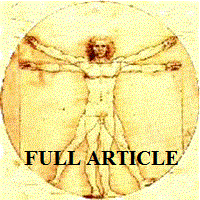JO VOL. 10 N. 2, Jul-Dec, 2018
The treatment of enchondroma of the hand: a narrative review of the literature.
Taccardo1, R. De Vitis1, G. Noia1, R. Vitiello1
1 Fondazione Policlinico Universitario A. Gemelli IRCCS, Roma, Italia – Università Cattolica del Sacro Cuore, Roma
Enchondroma of the hand is a common benign tumor composed of mature cartilage. The age of the affected patients varies widely. About 40% of enchondromas affects the small long bones of the hand, that represent their most frequent anatomic site. In the hand, the most frequent localization is in the proximal phalanx, followed by the middle phalanx, metacarpals, distal phalanx, and, rarely, in the carpal bones. The diagnosis of enchondroma is suspected based on X-ray images, and then confirmed by histopathological examination of the surgical specimen. In the hand the distinction between enchondroma and low-grade chondrosarcoma is very difficult, and it is very important because the treatment strategies for these diseases are completely different. The differential diagnosis between chondroma and chondrosarcoma in the hand is too difficult because often there are not visible radiographic differences. Moreover the chondroma in this anatomical district has histological characters typical of the low grade chondrosarcoma such as elevated cellularity, ample nucleuses, binucleate cells, even if is completely benign. It is reported that 10% of the chondromas of the hand have aspects of histological aggressiveness but they always result as chondromas. The immunohistochemical study of GADD45b may be a specific diagnostic parameter for chondrosarcoma cell differentiation. Clinically enchondroma of the hand often is manifested as a pathologic fracture associated with pain, deformity, and swelling. In other cases the bone fracture is absent.
Malignant transformation of monostotic enchondromas of the hand is rare and is associated with a very low rate of metastatic dissemination. Malignant transformations are more frequent in the multiple enchondromas like as Ollier Disease and Maffucci Syndrome. Enchondromas in Ollier’s disease (multiple, mainly unilateral chondromas) or Maffucci’s disease (multiple chondromas and angiomas of soft tissue) tend to be more cellular and may show a more spindle shaped appearance. Both syndromes are associated not only to crippling hand deformity, but also to an increased risk of developing chondrosarcomas and other malignant tumors.
A secondary chondrosarcoma according to malignant transformations of the solitary enchondromas are doubtful and extremely rare in the hand. The discussion in literature about chondrosarcoma of the hand arising from solitary preexistent enchondroma is very controversial. Well-documented, proved cases are rare.
Because of the growth of this benign tumors is locally destructive, with osteolysis of the cortical bone, the treatment of choice is the complete curettage of the lesion. Other types of treatment are possible, and other methods have been introduced during the last twenty years. The main topic of disagreement, in the treatment of this lesion, is still the need to use or not, autologous or eterologous bone grafting, or bone substitutes.



